
10 Jul' 19 | By gwcm
More people are joining the race to save our planet, and are beginning to become more conscious of their carbon footprint, with the effort of trying to live a more eco-friendly life. With the ever-growing crisis of global warming becoming a major topic, the UK witnessed temperatures soar to 26.5 degrees in February, the highest yet since 1998. With the sunnier months of May and June, turning into dreary, wet thunderstorms, we can’t deny that climate change is a pressing subject and our actions which contribute to global warming, need to change now.
The world’s population is expected to reach around 9.6 billion by 2050 and sadly, 795 million people across the world still go to bed hungry. Statistics show that there is enough food in the world to stop world hunger, but the majority of grain grown is fed to animals. A staggering 70% of the planets cultivable land is dedicated to animal agriculture.
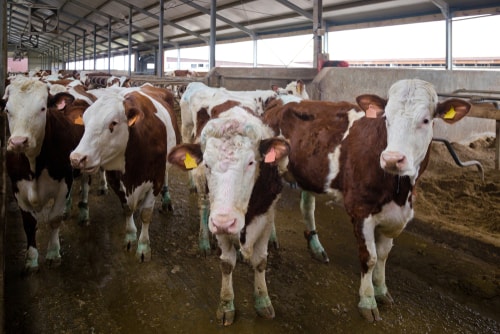
In light of this, many companies have helped accommodate the growing life style of veganism, and now cater for those who love meat-free burgers and vegan sausage rolls without compromising on taste. If a person was to follow a vegan diet for a day, they could save 1,100 gallons of water, 45 pounds of grain, 30 sq ft of forested land, 20 lbs CO2 equivalent and one animals life. Fast food chain Greggs started off 2019 the right way by trialling vegan sausage rolls in pilot stores beginning on January 3rd and due to the overwhelming response were available nationally by March. Burger King have teamed up with Impossible Foods and are trialling a plant-based whopper in the USA : ‘The Impossible Whopper’ which is designed to look and taste like the original whopper. KFC are also trialling a meat-less burger known as the ‘Imposter Burger’ in 20 of their UK stores. It’s the first attempt at a vegan alternative to the famous chicken burger, which is a win win for those who had to settle for chips and beans or a corn on the cob. Cheaper, fast-food chains are leading the way into a meat-less future, by catering for those already vegan and helping meat-eaters make a different decision at the till, without having to compromise on price or taste.
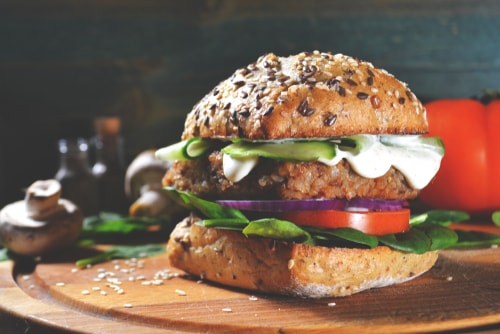
Greggs: https://www.youtube.com/watch?v=uC1Gh8CdDYQ
Burger King: https://impossiblefoods.com/gb-en/burgerking
KFC: https://www.thedrum.com/news/2019/06/16/peta-applauds-kfcs-modest-vegan-imposter-burger-trial
The dairy industry also has a large impact on to climate change, so tasty alternatives which people can indulge in are a win. Camilla Ainsworth, founder of ‘Mylk Plus’, and runner up of BBC, The 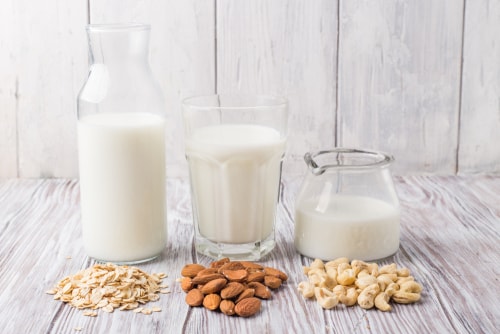 Apprentice 2018 created luxurious and tasty flavours for nut milk. The product contains three times the nut content of the market leader, requires less land than cows, and produces less greenhouse gases than rearing and farming cows. A good example of a young entrepreneur reducing greenhouse gases and providing a dairy alternative one nut at a time.
Apprentice 2018 created luxurious and tasty flavours for nut milk. The product contains three times the nut content of the market leader, requires less land than cows, and produces less greenhouse gases than rearing and farming cows. A good example of a young entrepreneur reducing greenhouse gases and providing a dairy alternative one nut at a time.
Eat Grub are a sustainable food source, with the aspiration to feed people without using the planets resources to farm. Crickets are a healthy alternative, are complete protein and calcium, require less land and produce less greenhouse gas. Sainsbury’s are the UK’s first retailer to stock insects on the shelves. They come in a variety of flavours that are flying off the shelves such as BBQ, peri-peri and sweet chilli and lime.
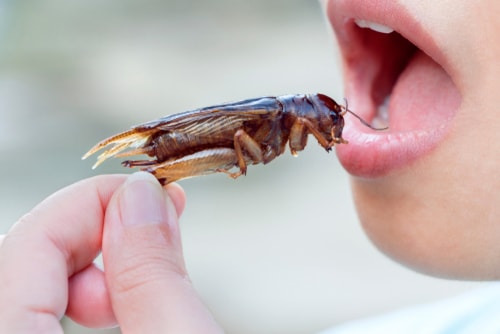
Find out more about the goodness of eating grub: https://www.eatgrub.co.uk/
Hellmann’s had a fantastic idea of combining their product with an important global issue of household food waste and the contribution to global warming. Their idea was derived from the insight that 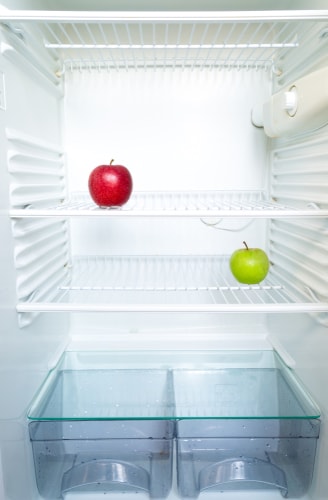 many people have food in their fridge, but there’s simply ‘nothing to eat’, so potential meals are going to waste. Ogilvy UK created ‘The Restaurant With No Food’ which encouraged people to bring their own leftovers into a gourmet restaurant, where celebrity chefs would convert them into five-star meals. Also proving how Hellmann’s can combine with almost anything. At the end of their meal, diners would receive a recipe for their meal, rather than a receipt. Another brilliant idea to prevent good food from ending up in landfill and producing greenhouse gases.
many people have food in their fridge, but there’s simply ‘nothing to eat’, so potential meals are going to waste. Ogilvy UK created ‘The Restaurant With No Food’ which encouraged people to bring their own leftovers into a gourmet restaurant, where celebrity chefs would convert them into five-star meals. Also proving how Hellmann’s can combine with almost anything. At the end of their meal, diners would receive a recipe for their meal, rather than a receipt. Another brilliant idea to prevent good food from ending up in landfill and producing greenhouse gases.
Watch the video here
7 million single use coffee cups are disposed of every day. That’s 2.5 billion every year. Coffee companies Starbucks and Costa have introduced a discount of 25p off any drink if you bring your own reusable coffee cup. This encourages consumers to be mindful about their waste, with the incentive of saving money. Costa are also the 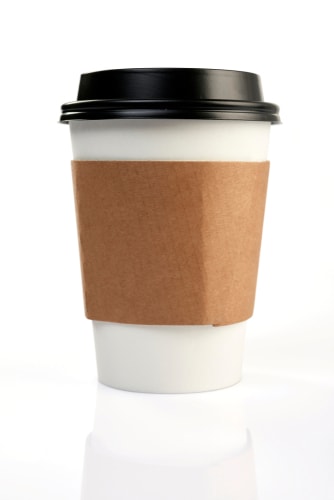 first UK coffee brand to offer customers glass cups, a sustainable alternative to plastic cups for their iced drinks. In six months they saved 8 million plastic cups from being used. Costa also have introduced a refillable water station, so you are able to re-fill your reusable water bottle to prevent plastic waste.
first UK coffee brand to offer customers glass cups, a sustainable alternative to plastic cups for their iced drinks. In six months they saved 8 million plastic cups from being used. Costa also have introduced a refillable water station, so you are able to re-fill your reusable water bottle to prevent plastic waste.
A recent campaign from Leeds City Council #LeedsByExample encourages recycling on the go, the council placed over 124 new recycling bins over the city centre, which reward you for recycling. There are also specific coffee cup recycling points to dispose of liquids, lids and cups separately. This recycling facility is also in place in Starbucks and Costa coffees nationally.
Starbucks: https://www.starbucks.co.uk/responsibility
LeedsByExample campaign: https://www.hubbub.org.uk/leeds-by-example
To prevent the waste of single use plastic rings to keep beer cans in packs, Corona came up with an innovative packaging design to solve the problem. They used ‘Fit Packs’, which changes the design of the can to have a ‘screw on’ feature at the top and bottom of the can, so multiple cans can be stacked on top of one another and carried with ease. Another great example of innovative packaging design to prevent contribution to landfill and ocean waste.
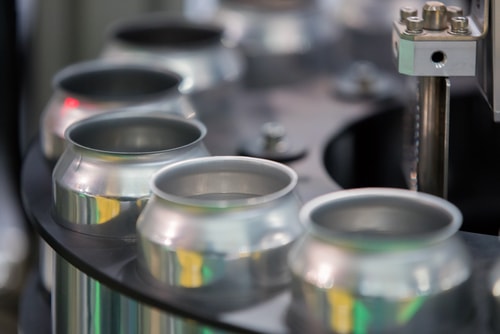
To see the packaging design video click here:
The companies above who have innovatively changed their strategic goals and invented new products, are all doing their bit to reduce their carbon footprint. We can all do our bit, by making simple, conscious decisions, and slight alterations to our actions, reducing our carbon footprint and helping contribute to a greener future. By not using a single use coffee cup, choosing less single-use non-recyclable packaging, using more leftovers rather than eating out, or trying a meat-free alternative may just be the best thing we can do to save our planet for future generations.
13 Jun' 19 8 marketing wins for body positivity